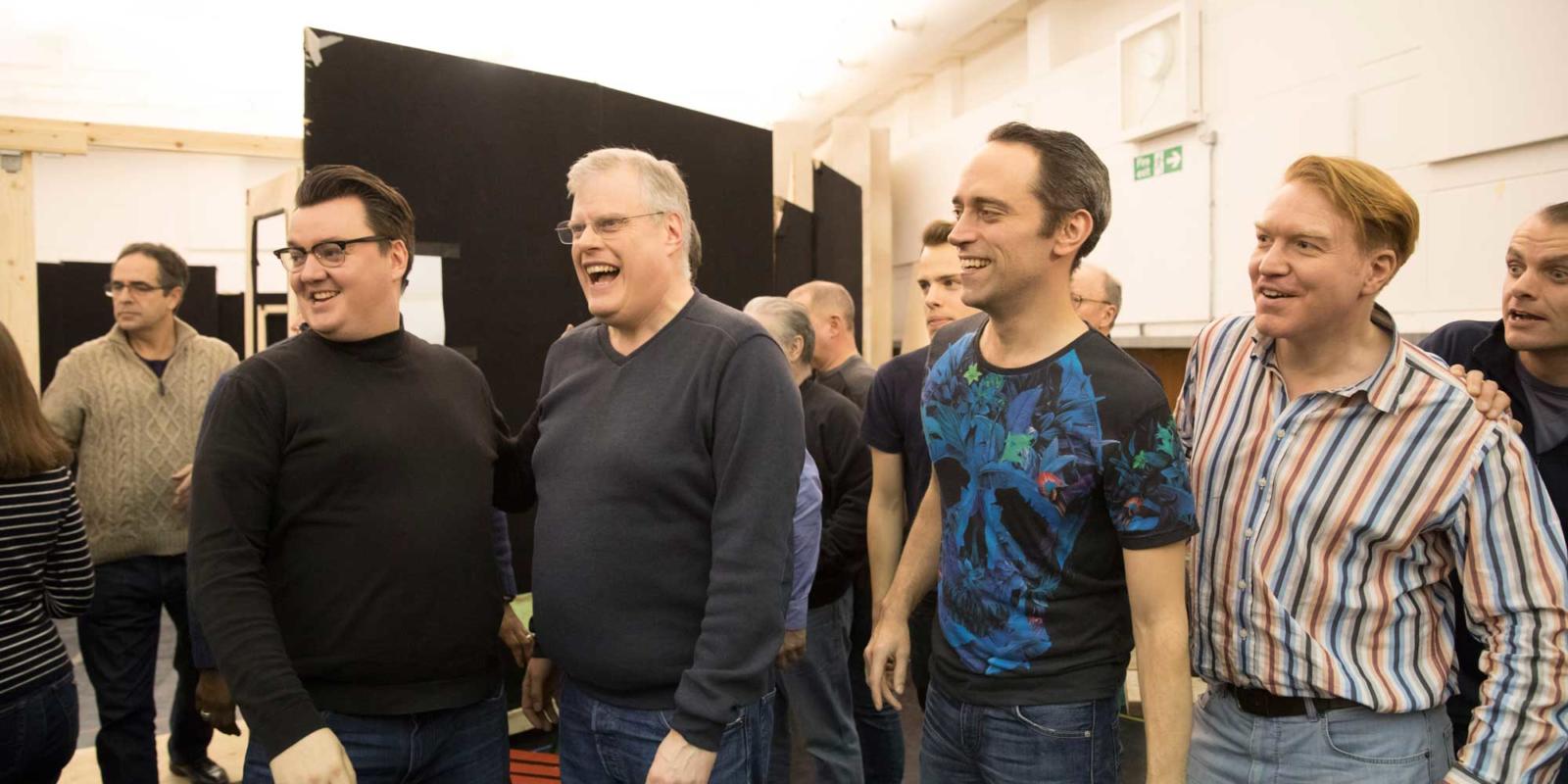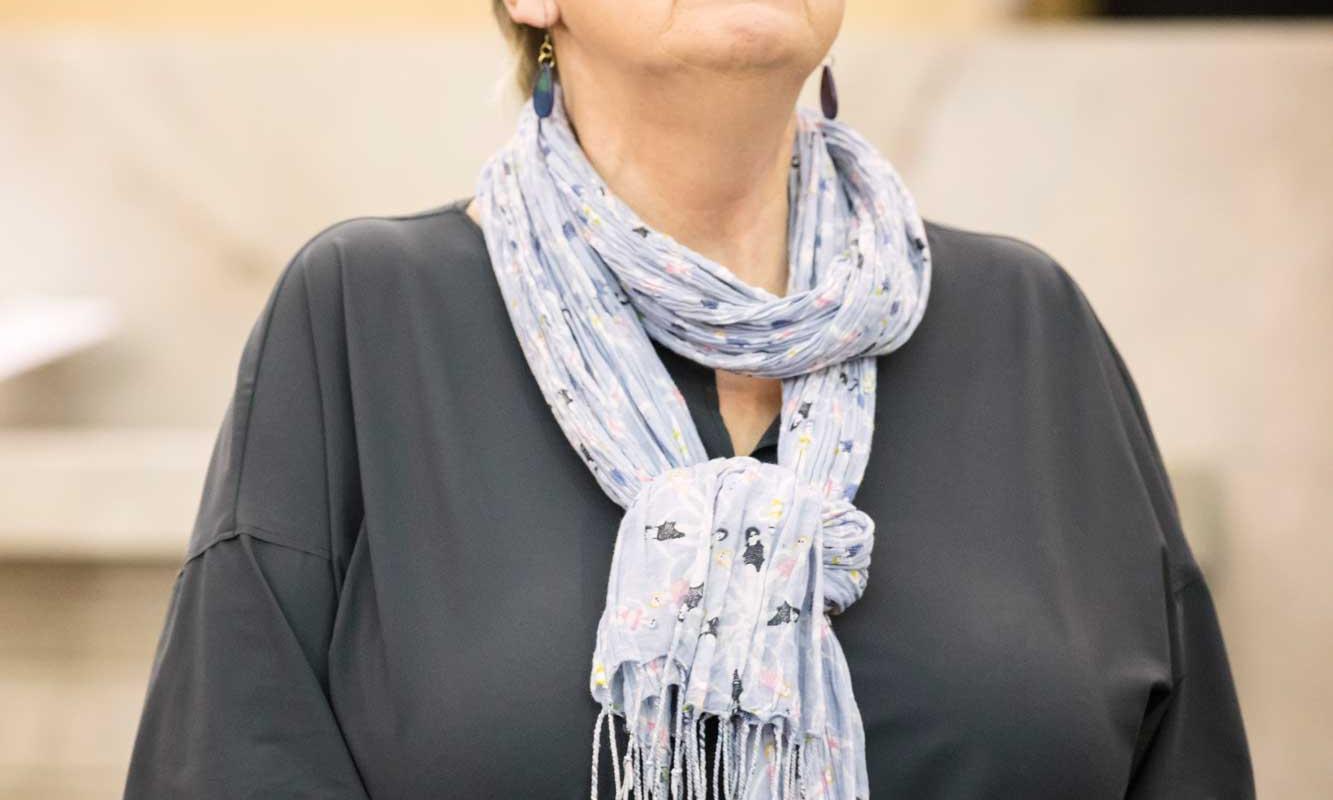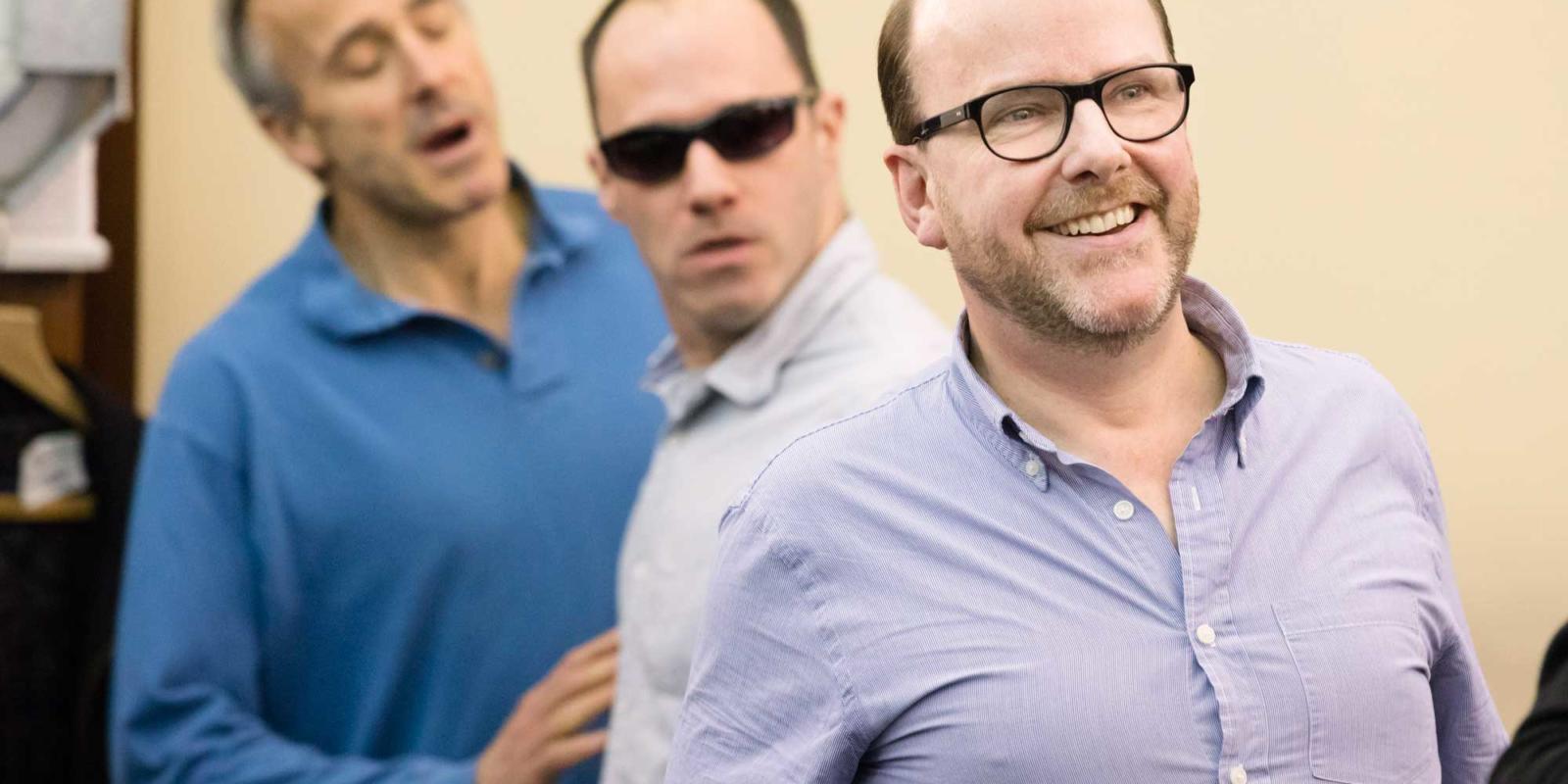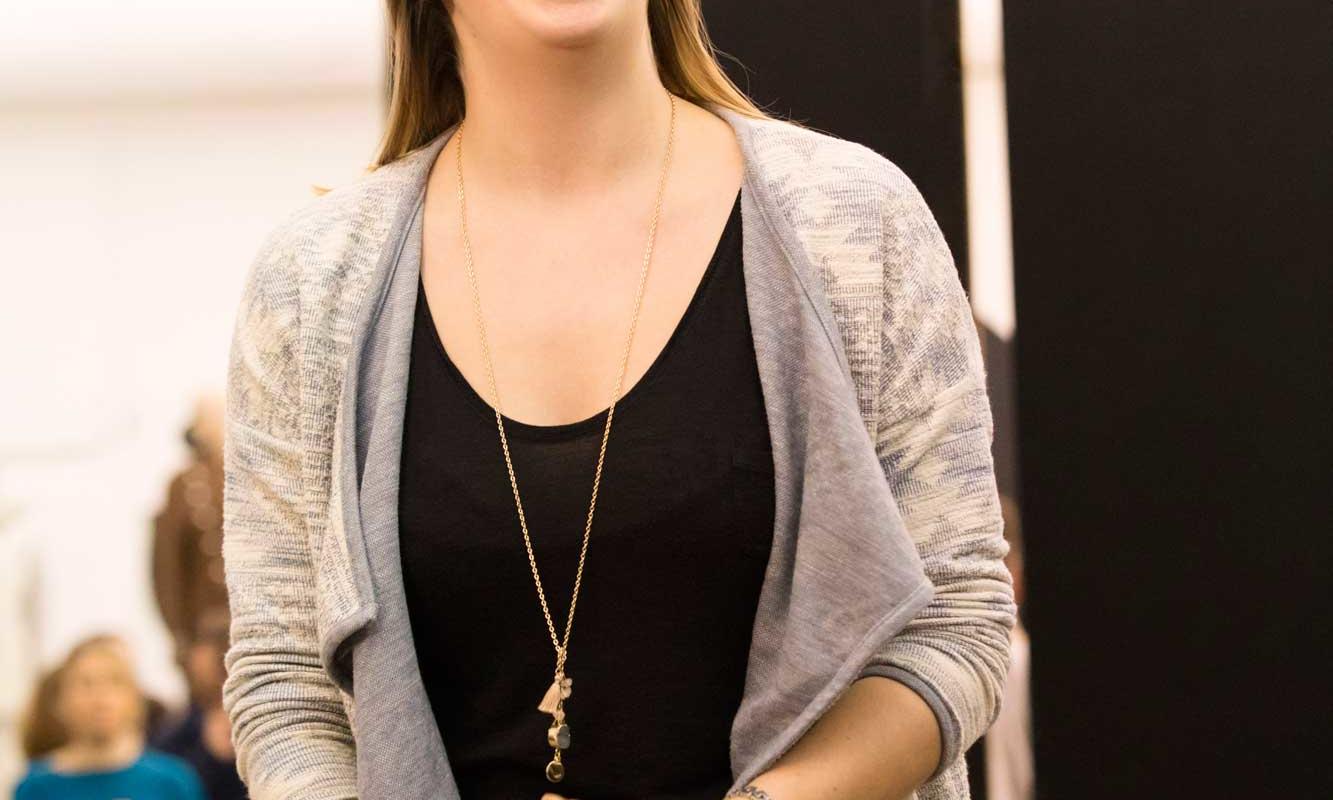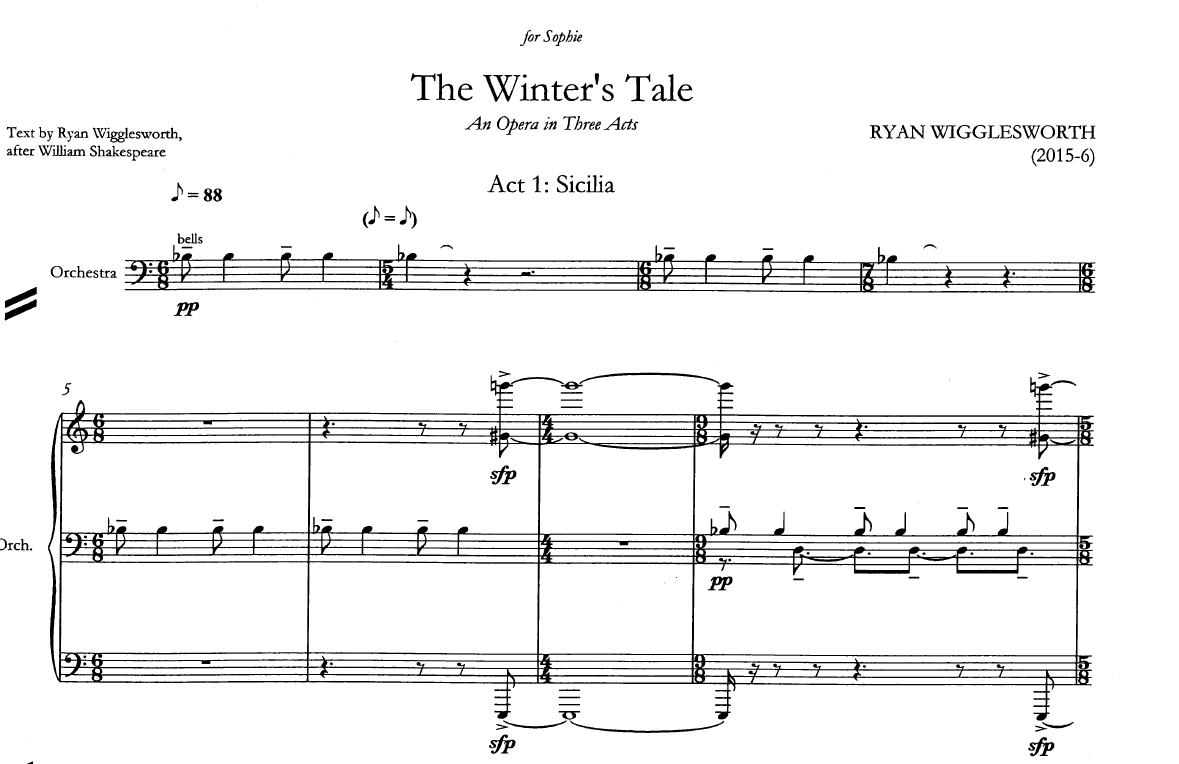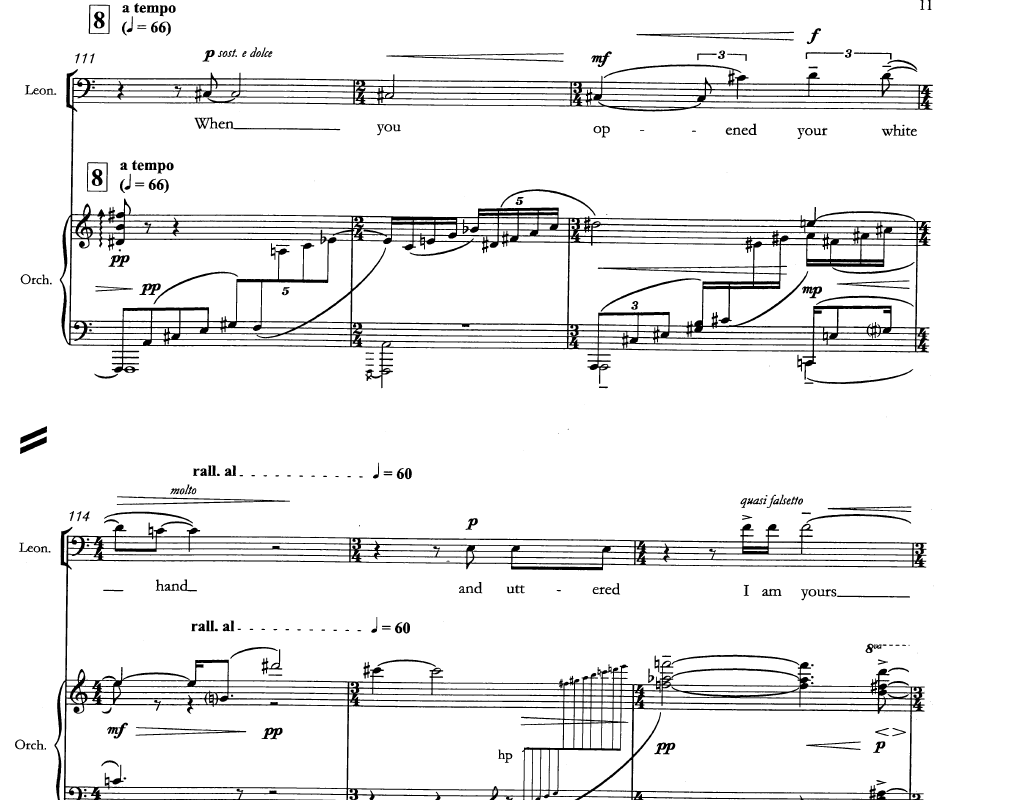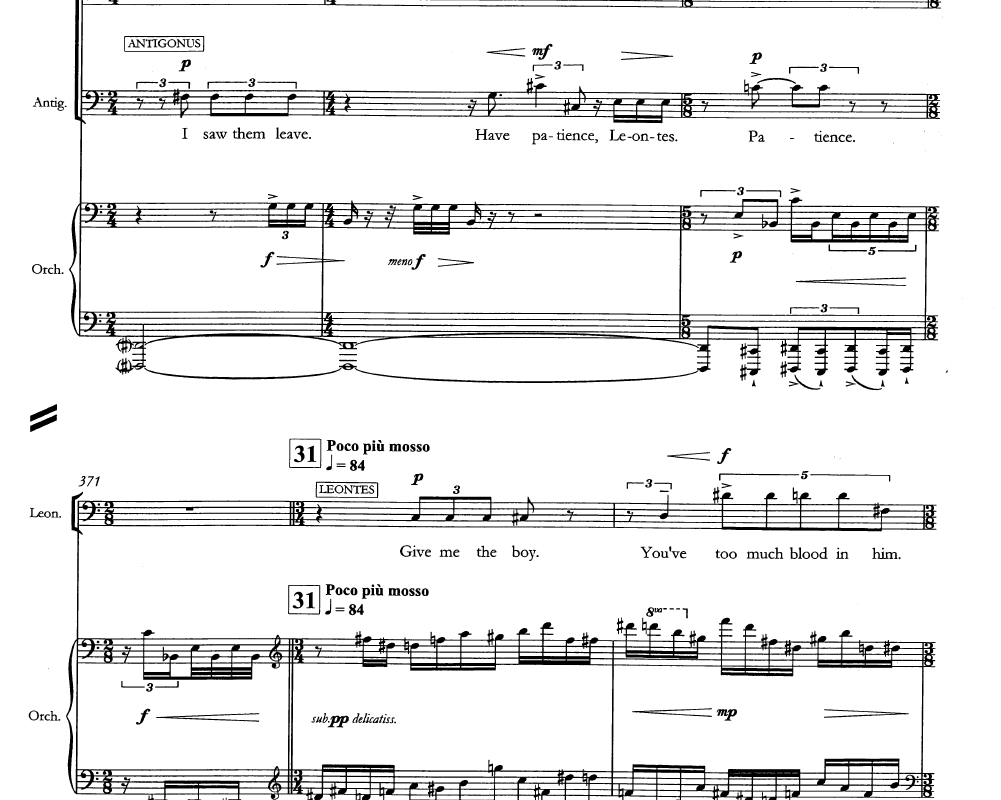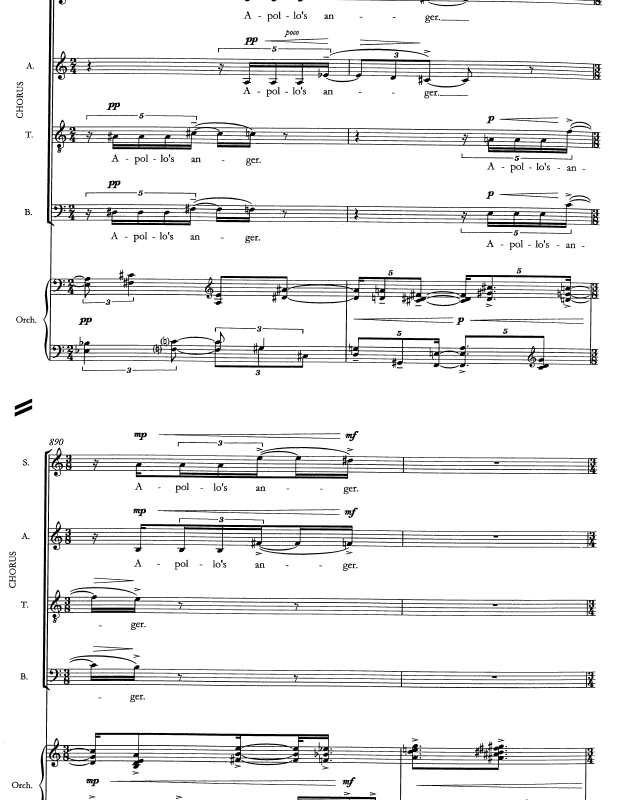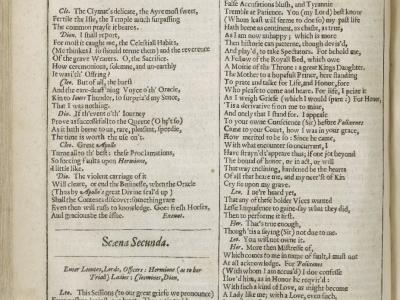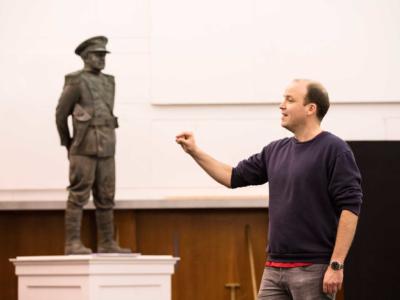The Music
Read more about:
Composition
The Winter’s Tale is Ryan Wigglesworth’s first opera. Commissioned by ENO, the process of composition was supported by a series of workshops.
‘The act of composition is about seeing a flash or a moment and labouring afterwards to unload it – seeing what builds up to this moment, or how the moment can be used to create further material. I initially worked on the overall shape of the opera before exploring in more detail how to musically differentiate the two worlds of Sicilia and Bohemia. The colour of a particular scene would become apparent as I sketched. But however strong and accurate one’s imagination, there is no substitute for hearing the work brought to life by the people you’re writing for. Only then can you be sure that the timing of a certain moment is right, that the narrative is clear.’
— Ryan Wigglesworth
The opera is scored for 8 principal singers, a chorus of 40 people and full orchestra of 68 players.
Watch Ryan Wigglesworth, along with members of the cast, orchestra and chorus, discuss the music.
The singers
The principal singers were cast at the very start of the creation process, allowing Wigglesworth to compose for voices he knew well. Knowing the particular colour of a singer’s voice, notes that sound good in their register and which vowels resonate, helped Wigglesworth to create the music for their characters.
Listen to an excerpt from the opera in rehearsal:
The opera features large crowd scenes performed by a chorus on and off stage. The traditional operatic trope of the chorus provides an opportunity to give a voice to the citizens that is not present in the play. In the trial scene in Act 1 for example, the chorus of Sicilian citizens – living under a tyrannical rule – protest against the arrest of their beloved queen.
An offstage chorus is used as a recurring device in the opera, sometimes drawing attention to the world outside that which is immediately pictured onstage, and at other times representing the inner world of the onstage characters.
View photos of the singers in rehearsal for The Winter’s Tale
Find out more about the rehearsal experience of Samantha Price, who performs the role of Perdita, in her weekly vlog.
The orchestration
The orchestra has an important role in conveying parts of the narrative. Percussion instruments including bells and chimes are heard throughout the piece, symbolising the advancement of time. The very opening of the opera sets the scene through the use of bell tolls and sustained strings. At other points in the opera, the whole orchestra copies the music of the bell tolls to become an enormous, multi-layered timepiece, taking on the character of Time in the play.
Wigglesworth has also written a number of musical interludes in which the orchestra takes on the role of conveying dramatic action that Shakespeare alludes to but does not write, such as the reunion between Perdita and Leontes, and between the two kings.
Listen to the ENO orchestra rehearsing the opera:
Explore excerpts from the vocal score:
Wigglesworth, The Winter’s Tale vocal score ©2016 Schott Music Ltd, London
Hear Ryan discuss his composition process with other contemporary opera composers:
Read more about music and Shakespeare.

